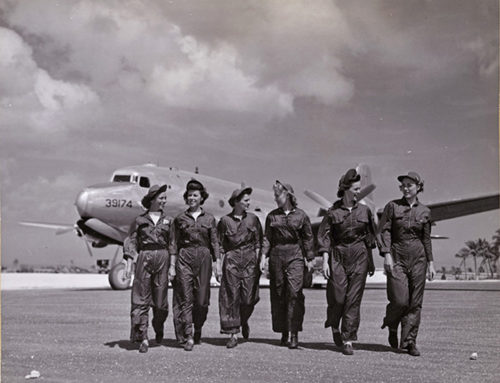America has seen little war fought on its shores. For the most part, the major battles have been brought to the enemy leaving little destruction in the U.S. While many times our forces have gone overseas, this does not mean that America was left unscathed in the World Wars. Besides Pearl Harbor, there were U-boat sightings off the Atlantic Coast for much of World War II. In fact, German U-boats were so common in areas of the Atlantic that the area became known as Torpedo Junction (Torpedo Alley).
World War II was not the first time that German U-boats creeped along the Atlantic shores. During World War I, a U-boat came dangerously close to the coast of Cape Cod. Three U-boats sank ten ships off the coast of North Carolina and navigated along the coast asserting German power. The Outer Banks of North Carolina would become a hot spot for German U-boats, leading to the nickname of “Torpedo Junction” in World War II. The name U-boat comes from the German word “unterseeboot” meaning submarine. Despite being categorized as submarines, u-boats were technically warships that spent most of their time on the surface. They could only submerge for limited periods of time which was usually to avoid enemy detection. When they would attack, U-boats were usually above the surface and used deck mounted guns. After the bombing of Pearl Harbor in 1941, Germany came up with a plan they called Operation Paukenschlag. 
Why pick the Carolina coastline? The Atlantic Coast was unprepared for a U-boat assault. Merchant ships had no training in defensive maneuvers, and onshore no preventions such as blackout restrictions were put in place. Coastal lights provided easy targeting for the German Navy. U.S. Naval patrols in the Atlantic were few due to the needs in the Pacific. Only one vessel, the Dione, patrolled the area. Designed to catch rum-runners, she would be no match for the might of the U-boat. The German crews had already been at war for two years by 1941, leaving them highly trained compared to the few defenses left on the Atlantic coast. Between January and June of 1942, 397 merchant ships were sunk. It was said that the attacks off the Outer Banks were so frequent that “Flaming tankers burned so brightly…one could read a newspaper by the glow at night, while the grim flotsam of war-oil, wreckage, and corpses- was strewn across local beaches.”
Marshall’s plea would not go unnoticed. As time passed, little could be done to keep news of the attacks from circulating. One attack that struck the fear of those along the coast line was that of the Canadian Steamship “Lady Hawkins.”
On January 28, 1942, Donald Francis Mason, a pilot with Patrol Squadron Eight-Two, and his crew took off for a continuing series of patrols over “Torpedo Junction.” At first the mission took on its quiet scanning of the waters with nothing much to see. But shortly after 1:00pm, Mason spotted a flash of light. The crew saw a periscope appear above the surface of the water. Mason, without thought or hesitation, began his attack on the U-boat. Here is an excerpt from a report filed on the attack:
Plane turned and attacked at once. Submarine was apparently completely surprised, as periscope was visible throughout entire attack. Approach was made from astern submarine on a course about 20 degrees across submarine’s course. Bombs were released at estimated altitude of 25 feet, indicated air speed 165 knots. Two bombs were dropped with a spread of about 25 feet.
Plumes of the explosions were seen to spread, one on either side of periscope, estimated distance 10 feet from wake line and nearly abreast the periscope. The submarine was lifted bodily in the water until most of the conning tower could be seen. Headway of submarine seemed to be killed at once and she was observed to sink from sight vertically. Five minutes later, oil began to bubble to the surface and continued for ten minutes. At this time it was necessary to leave area in order to return to base by dark. Plane landed at 1628.
Detailed employment of crew during bombing attack was as follows:
(1) Pilot at the controls:
(2) Co-pilot in the cockpit alongside the pilot, armed bombs, stood by manual release.
(3) Plane Captain attempted to take photographs of target with F-48 camera during glide approach and after attack. Pictures of this attack were poor because of greatly reduced lighting conditions.
(4) Radioman in bow at the Navigator’s Desk, acting as lookout with binoculars.[1]
While an official report of the incident was not released publicly until April 1, 1942, A Time’s article in February about the sinking of “Lady Hawkins” alludes to the attack. In the closing of the article, it was quoted that a report radioed by Mason saying “Sighting sub, sank same” [2]
By the summer of 1942, the anti-submarine patrols had done their job. While merchant ships were periodically lost throughout the rest of the war, it never compared with what had occurred in the early days of 1942. By the end, more than eighty ships had been lost with hundreds of innocent lives lost off the coast of North Carolina. In most discussions of WWII, the U-boat attacks of the Atlantic coast are often forgotten. 
[1] https://www.homeofheroes.com/footnotes/2007/01January4-mason.html
[2] In post-war records it was discovered that Mason had not sunk the U-boat on January 28, 1942. He would go on to sink a German U-boat on March 5th, which he would receive a Flying Cross for. Despite the records correction, his quote of Sighting sub, sank same has lived on and is no in the list of famous naval quotes.




